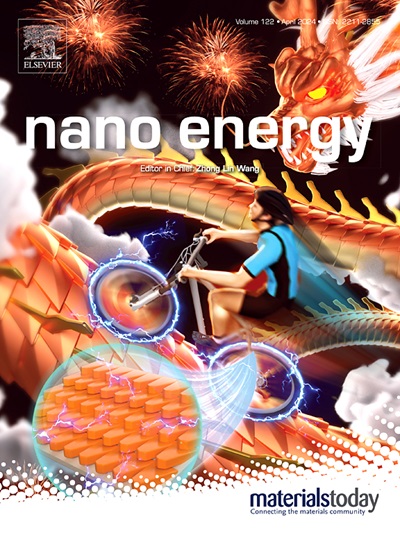聚阴离子水凝胶电解质调节长循环寿命锌离子电池中的离子传输行为
IF 17.1
1区 材料科学
Q1 CHEMISTRY, PHYSICAL
引用次数: 0
摘要
锌阳极的内在挑战明显阻碍了水锌离子电池的实际实施,主要表现在两个关键问题上:(1)在电极-电解质界面发生不可逆的副反应;(2)在电化学循环过程中枝晶结构的形成和生长。本文设计了一种具有良好附着力和力学性能的磺酸基聚阴离子水凝胶电解质,用于构建无枝晶和长循环寿命的zbs。阴离子部分的引入诱导了Zn (H2O)62+中配位水分子的部分取代,促进了Zn2+周围溶剂化环境的重组,促进了离子传输动力学和Zn2+的扩散。阴离子大分子结构有效地调节了电极-电解质界面的电位分布,减少了寄生反应,减缓了枝晶的生长。采用聚阴离子水凝胶电解质的锌对称电池表现出长期的电化学稳定性,在1mAcm-2和5mAcm-2下分别保持了3300h和1100h的稳定镀锌/剥离循环。当配置为具有Zn//NVO/MWCNTs阴极的全电池时,该系统具有优异的比容量和卓越的循环性能。这项工作为开发先进的水凝胶基电解质体系解决锌阳极不稳定性和安全性问题提供了新的见解。本文章由计算机程序翻译,如有差异,请以英文原文为准。
Polyanionic hydrogel electrolytes to regulate ion transport behavior in long cycle life zinc-ion batteries
The practical implementation of aqueous zinc-ion batteries (ZIBs) is distinctly hindered by the intrinsic challenges concerned with Zn anodes, primarily manifested through two key issues: (1) the occurrence of irreversible side reactions at the electrode-electrolyte interface and (2) the formation and growth of dendritic structures during electrochemical cycles. Herein, a sulfonate-based polyanionic hydrogel electrolyte with good adhesion and mechanical properties is designed for building dendrite-free and long cycle life ZIBs. The introduction of anion moieties induces the partial substitution of coordinated water molecules in Zn (H2O)62+, promoting the reorganization of the solvation environment around Zn2+ and facilitating the ion transport kinetics and Zn2+ diffusion. The anionic macromolecular structure effectively regulates the potential distribution at the electrode-electrolyte interface, minimizing parasitic reactions and alleviating dendrite growth. The Zn symmetric cells employing the polyanionic hydrogel electrolyte exhibit the long-term electrochemical stability, maintaining the stable zinc plating/stripping cycles over 3300 h at 1 mA cm−2 and 1100 h at 5 mA cm−2. When configured as full cells with Zn//NVO/MWCNTs cathodes, the system delivers superior specific capacity and remarkable cycling performance. This work provides new insights for developing the advanced hydrogel-based electrolyte systems to address the Zn anode instability and safety issues in aqueous ZIBs.
求助全文
通过发布文献求助,成功后即可免费获取论文全文。
去求助
来源期刊

Nano Energy
CHEMISTRY, PHYSICAL-NANOSCIENCE & NANOTECHNOLOGY
CiteScore
30.30
自引率
7.40%
发文量
1207
审稿时长
23 days
期刊介绍:
Nano Energy is a multidisciplinary, rapid-publication forum of original peer-reviewed contributions on the science and engineering of nanomaterials and nanodevices used in all forms of energy harvesting, conversion, storage, utilization and policy. Through its mixture of articles, reviews, communications, research news, and information on key developments, Nano Energy provides a comprehensive coverage of this exciting and dynamic field which joins nanoscience and nanotechnology with energy science. The journal is relevant to all those who are interested in nanomaterials solutions to the energy problem.
Nano Energy publishes original experimental and theoretical research on all aspects of energy-related research which utilizes nanomaterials and nanotechnology. Manuscripts of four types are considered: review articles which inform readers of the latest research and advances in energy science; rapid communications which feature exciting research breakthroughs in the field; full-length articles which report comprehensive research developments; and news and opinions which comment on topical issues or express views on the developments in related fields.
 求助内容:
求助内容: 应助结果提醒方式:
应助结果提醒方式:


